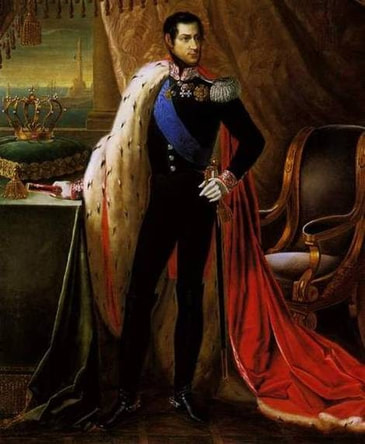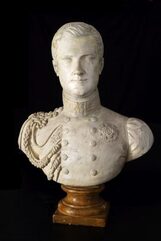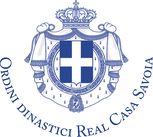American Delegation of Savoy Orders
History of the Civil Order of Savoy
1831
|
During the first year of his reign, the Civil Order of Savoy was established by King Charles Albert (Carlo Alberto) of Sardinia-Piedmont by Royal Letters Patent issued on October 29, 1831. It was an institution analogous in form to the Military Order of Savoy which had been founded on August 14, 1815, by his predecessor, King Victor Emmanuel I.
The King’s purpose in establishing the new order was eminent recognition of individuals who distinguished themselves as outstanding members of society in the fields of science, letters, architecture, education, engineering, and civic leadership. Initially there were forty knights. From 1861, following the unification of Italy under King Victor Emmanuel II, there were sixty knights and, from 1887, seventy knights throughout the nation. It was a rare award bestowed only on Italians who, "having devoted themselves to professions no less useful than those of the Army, have become, through deep and long studies the ornament of the State or who have through their toils been of use-to the public well being." The statutes of the Order establish that it is bestowed for merit upon government administrators, scientists and other humanists who have published important work, architects and engineers of noteworthy projects and distinguished educators.Cavour, Verdi and Marconi were among the distinguished recipients. It is seldom bestowed today and its membership is limited in number. The Order has always had a single rank, that of knight; and, it has no dames. At court, the knights of the Civil Order of Savoy (Cavalieri dell'Ordine Civile di Savoia) enjoyed the same precedence as the knights in the Order of Saints Maurice and Lazarus and the Military Order of Savoy. |
|
The insignia of the Order bears the inscription Al Merito Civile-1831; the letters C.A. on the reverse substituted for V.E. after the death of Charles Albert in 1849.
The Civil Order of Savoy has always been considered a dynastic order and the personal gift of the Head of the House of Savoy, and in that sense, it is not unlike certain other personal European dynastic orders, such as the Royal Victorian Order in England. King Umberto II did not abdicate his position as fons honorum after the foundation of the Italian Republic in 1946 and now the order remains under the Grand Mastership of the head of the Royal House of Savoy. H.R.H. Prince Victor Emmanuel of Savoy is the VIth Grand Master of the Order. |
Royal House |
History |
Orders |
Members |
News & Events |















